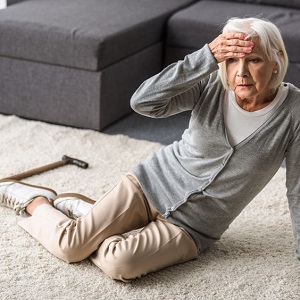What are Falls and Fall Related Injuries?
Falls and fall related injuries cause unintentional consequences to the many people worldwide. A fall is described as an unexpected event when a person comes into contact with a lower surface, such as a floor or ground. Fall related injuries are either fatal or non-fatal, however the majority of falls do not result in loss of life.
It is generally accepted that one out of five falls will result in a more serious injury. The more serious injuries make daily activities more difficult and may prevent the victim from continuing to live alone. In non-fatal cases, victims experience minor injuries like lacerations, abrasions or bruises. Bone fractures – hips, arm, wrist, ankles and more are common and more serious. Head injuries may be minor or major and must receive immediate attention. Education of adults, parents and older adults reduces the risk and incidences of falls and fall related injuries.
One in five falls will result in a more serious injury
Falls and Fall Studies
According to the World Health Organization, falls comes second after road traffic injuries in the list of unintentional causes of fatal injury. Studies report that falls increase with age in both women and men. Adults over 65 year are the largest group. The studies are not all bad news. It has also been found that educating older men and women about the risk factors for falls result in fewer repeat fall events.
Who is at risk of falls and fall related injuries?
Everyone who falls is at risk. However, those highly predisposed include:
- Adults with underlying medical Balance Disorders
- People over 60 years of age and
- Children from 1-5 years e.g. developmental stages
- Children with underlying Balance Disorders
What are the Risk Factors for Falls?
Risk factors are things that increase your risk of falling. Falls can be the result of several risk factors. The more risk factors you have, the chances of falling increases become higher. There has been a worldwide shift towards timely referral to health professionals for assessment of risk, identification of underlying disorders, and then treatment or intervention if required. That is, a preventative approach to health care rather than post injury healthcare.upon realising the risk factors. The classification of the risk factors for falls include the following:
- Intrinsic (personal) factors. Include personal characteristics like gender, age and health conditions.
- Extrinsic (environmental) factors. Refers to threats found around your residential area or public places that expose you to falling. For instance, slippery surfaces and lack of support from hand and grab rails
Intrinsic Risk Factors for Falls
Aging effects. Getting older increases the likelihood of falling, especially for people reaching very old age (80 years plus). Physical changes include changes in gait and balance that result in slower movements, reduced hearing sensitivity and vision problems like decreased contrast and increased sensitivity to brightness.
Chronic and acute diseases. Some diseases like stroke, depression and osteoporosis accentuate the decline in physical and mental ability. The signs may be gradual and subtle or sudden and severe. The signs that you are at increased risk of falling may be impaired judgements, dizziness, tremors, low blood pressure, weakness, paralysis, among others.
Side effects from some medications. Drugs like antidepressants, antipsychotics and sedatives may interfere with your body causing side effects like body weakness, confusion and dizziness.
Drug interactions and polypharmacy. Administration of excess drugs or many drugs concurrently can result in unwanted drug-drug interactions in the body. The side effects can be complex and involve extensive body weakness. Falling can occur seemingly without warning.
Extrinsic Risk Factors for Falls
The Environment. Where people live, work and gather is often ignored as a Risk factor for Falls. The Environment may be home, work , cafes, parks – in fact almost anywhere. Environmental issues when added to intrinsic factors such as poor balance and limited vision, multiplies the risk of severe injuries again. Some environmental risk factors for falls include:
- Poor lighting
- Uneven and slippery floors / walkways
- Raised shelves and other hard to reach thresholds
- Toilet seats and bathrooms without support handrails
- Opening doors and doorways
- Hazardous working and living conditions
Personal Clothing and Equipment The right or wrong gear impacts personal safety. Choosing the right gear for each activity reduces the Falls risk. For example: if you have a bad hip you may need a walking stick. If you are walking on uneven ground you may need a cross trainer or walking shoe. Or if your vision is impaired, new prescription glasses.
Faulty equipment and Training. Perhaps you have a walking stick – but it needs to be the right stick – the right length, the right strength and used correctly. A wheelchair may be necessary – but it needs to have brakes and you need to know when and how to use them. There are more gadgets to help with Activities of daily Living than ever before. The health professional can help you look into these.
Other risk factors for falls include:
- The social-economic factors like residential overcrowding, hoarding and poverty
- Substance abuse, e.g. alcohol, illicit drugs
Falls and Falls Injuries are increasing around the world. Fall can occur at any age but are more common in people, both men and women over 60 years of age. Many falls victims suffer in silence and endure recurrent falls. However, increasing awareness and education about the risk factors for falls is the first step towards considering your health, wellness and your environment. Early assessment and potential diagnosis of underlying conditions will help you and your love ones avoid falls and fall related injuries.
Call now at (03) 6223 5444 to make an appointment to discuss your falls risks.

